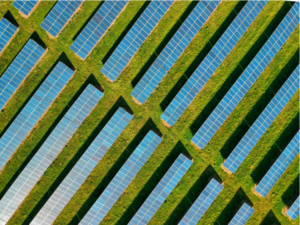How to Reduce Waste and Be More Environmentally Friendly When Planning an Event
March 13, 2024Delhi’s Solar Policy 2024 Promises Big Gains
March 20, 2024Source: Unsplash
As the global conversation around climate change heats up, the shift towards green energy has never been more critical. For the eco-conscious citizen, understanding the plethora of green energy options can be both empowering and overwhelming. This article aims to demystify the various avenues of sustainable energy, offering insights into an environmentally friendly future.
The Sun’s Bounty: Solar Power
Solar power, harnessed from the endless energy of the sun, represents one of the most accessible and widely used forms of green energy. Advances in photovoltaic technology have made solar panels more efficient and affordable than ever before. But it’s not just about slapping some panels on your roof anymore; innovative solutions from floating solar farms to solar windows illustrate the versatility and adaptability of solar energy in our daily lives.
Collaboration Across Borders
The quest for sustainable energy is a global challenge that necessitates international collaboration. Countries can achieve remarkable progress by sharing technological advancements, regulatory frameworks, and success stories. Through global partnerships and initiatives, the collective pursuit of green energy solutions has the power to address critical environmental issues, paving the way for a sustainable planetary future.
In regions where green energy options are actively being explored and adopted, such as in Dallas, Texas, residents have the opportunity to contribute to a greener planet by choosing their energy sources wisely. Several companies offer information and services tailored to this pursuit, like a Dallas electricity company that emphasizes fixed-rate plans and green energy options, serving as a resource for individuals looking to make informed decisions about their energy consumption.
The Power of Gusts: Wind Energy
Wind energy is another champion of the green energy crusade, utilizing the planet’s ceaseless wind patterns to generate electricity. Turbines, both onshore and offshore, convert kinetic energy from the wind into power. Beyond the well-known wind farms, smaller, personal turbines are now making their way into residential setups, proving that size doesn’t always matter when it comes to harnessing the power of the wind.
A Deep Dive: Hydroelectric Energy
Water is a powerful source of energy, and hydroelectric plants leverage this by using dams to control the flow of water, converting potential energy into electricity. While large-scale dams are common, there’s a growing interest in micro-hydroelectric systems that can bring the benefits of hydropower to even the smallest of streams.
The Ground Beneath Our Feet: Geothermal Energy
Geothermal energy taps into the heat stored underneath the Earth’s surface. This renewable source can be used for power generation or direct heating purposes. Thanks to recent technological advancements, geothermal systems are becoming more feasible for individual homes, offering a stable and continuous source of energy.
Renewable, Not Recycled: The Importance of Innovating Beyond Biomass
While biomass energy—derived from organic materials like plant and animal waste—has been a traditional form of renewable energy, its viability and environmental impact are subjects of ongoing debate. Innovators are exploring beyond traditional biomass, venturing into algae biofuels and waste-to-energy systems that promise greater sustainability and less environmental compromise.
Expanding Public Awareness and Education
To truly harness the potential of green energy, a concerted effort must be made to expand public awareness and education. Informative campaigns and accessible resources can empower individuals and communities to make informed decisions about adopting sustainable energy solutions. Encouragingly, schools and institutions are beginning to include green energy topics within their curricula, fostering a new generation equipped to tackle the energy challenges of tomorrow.
Beyond the Horizon: Emerging Technologies
The future of green energy isn’t just in improving what we already have but in discovering new ways to harness nature’s power. Novel technologies like tidal energy, energy harvesting from ambient vibrations, and even space-based solar power present exciting frontiers that could redefine what it means to power our world sustainably.
Strengthening Policy for Sustainable Impact
For green energy to flourish, supportive policies and incentives from governments and corporations are crucial. Legislation promoting renewable energy investment, tax rebates for green energy solutions, and grants for research and development can significantly accelerate the adoption of eco-friendly energy sources. It requires a synergy between public demand and political will to create an environment where green initiatives can thrive.
Conclusion
In the journey towards a greener planet, understanding the diverse palette of green energy options is essential. Each form of renewable energy brings its unique set of advantages, challenges, and opportunities. As we continue to innovate and adapt, the dream of a fully sustainable, eco-friendly energy system seems more attainable than ever. Let’s embrace the winds of change, bask in the sun’s glow, and march forward into a cleaner, greener future together.

